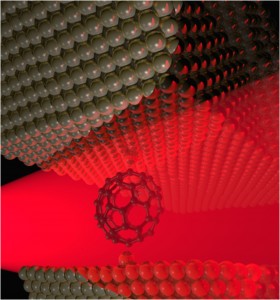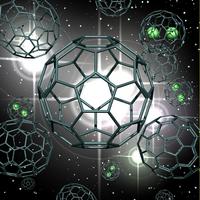Getting onto a list for news releases from Japan has been a boon. I don’t know how it happened but now I can better keep up with the nanotechnology effort in the country where the term was first coined (Norio Taniguchi) and which is a research leader in this field.
Irago Conference
This is a very intriguing conference, from a joint Oct. 18, 2015 Toyohashi University of Technology and University of Electro-Communications press release,
Organized by the Toyohashi University of Technology and University of Electro-Communications, Tokyo, the Irago Conference aims to enhance mutual understanding between scientists, engineers, policy makers, and experts from a wide spectrum of pure and applied sciences in order to resolve major global issues.
The Irago Conference 2015 is a unique conference combining thought provoking insights into global issues including disaster mitigation, neuroscience, public health monitoring, and nanotechnology [emphasis mine] by internationally renowned invited speakers with selected talks, posters, and demonstrations from academics, industrialists, and think tanks. The conference is truly a ‘360 degree outlook on critical scientific and technological challenges’ facing mankind.
Recent changes in global economics and industrial priorities, environmental and energy policies, food production and population movements have produced formidable challenges that must be addressed for sustaining life on earth.
The Irago Conference will highlight the major issues by bringing together experts from across the world who will give their views on key areas such as energy and natural resources, medicine and public health, disaster prevention and management, as well as other advances in science, technology and life sciences.
Observation, measurement, and monitoring are the keywords of the core topics covered at Irago 2015 with invited speakers Professor Masashi Hayakawa (University of Electro-Communications, Japan) presenting his pioneering research on “Earthquake prediction with electromagnetic phenomena, and Nobuhiko Okabe (Kawasaki City Institute for Public Health, Japan) discussing “The role and contribution of Kawasaki City Institute for Public Health (Local Public Health Laboratory), locally and globally” with first hand examples of monitoring food safety and the spread of possible diseases carried by insects.
The Irago Conference will be streamed live. Visit the conference website for the links to the streaming site.
When: Thursday, 22 October 2015 to Friday 23 October 2015.
Where: Irago Sea-Park & Spa Hotel, Tahara, Aichi, Japan
They don’t appear to have set up the streaming link yet.
Tuneable metallofullerenes
Originally issued as a Sept. 21, 2015 press release, the University of Electro-Communications has issued an Oct. 19, 2015 version,
Tiny nanoscale molecules in the form of spherical carbon cages, or ‘fullerenes’, have received considerable attention in recent years. Individual or small groups of atoms can be trapped inside fullerenes, creating stable molecules with unique electronic structures and unusual properties that can be exploited in the field of nanomaterials and biomedical science.
Endohedral metallofullerenes (EMFs) are one such class of molecules, in which one or more metal atoms are encapsulated inside many kinds of carbon cages. Crucially, the metal atom(s) are not chemically bonded with the carbon surrounds, but they do donate electrons to the carbon cage. Scientists have recently begun to understand how to control the movement, behavior and positioning of the enclosed atoms by adding other atoms, such as silicon or germanium (in their silyl or germyl groups), to the fullerene surface. This allows for the manipulation and fine-tuning of the EMF’s properties.
Now, Masahiro Kako and co-workers at the University of Electro-Communications in Tokyo, together with scientists across Japan and the USA, have created and analyzed the effects of silylation and germylation on an EMF called Lu3N@Ih-C80 (three lutetium atoms bonded to a nitrogen atom encased inside a carbon 80 cage).
Using X-ray crystallography, electrochemical analyses and theoretical calculations, the team discovered that adding silyl groups or germyl groups to the fullerene structure was a versatile way of controlling the EMF’s electronic properties. The exact positioning of the silyl or germyl groups in bonding to the carbon structure determined the energy gaps present in the EMF, and determined the orientation of the bonded metal atoms inside the cage.
The germyl groups donated more electrons and the process worked slightly more efficiently than the silyl groups, but Kako and his team believe that both provide an effective way of fine-tuning EMF electronic characteristics.
Background
A brief history of fullerenes
Fullerenes are carbon molecules that take the shape of spheres. The most famous and abundant fullerene is the buckminsterfullerene, or ‘buckyball’, C60, which resembles a soccer ball in shape with a bonded carbon atom at each point of every polygon.
Endohedral metallofullerenes, or EMFs, are created by trapping a metal atom or atoms inside a fullerene cage, rather like a hamster in a ball. The trapped atom(s) are not chemically-bonded to the carbon, but they do interact with it by donating electrons, thus creating unique and very useful molecules for nanomaterial science and biomedicine.
Silylation and germylation
The addition of other atoms to fullerene surfaces can affect EMF properties, by regulating the behavior of the metal atoms inside the fullerene cage. In one EMF, the movement of lanthanum atoms is restricted to two dimensions by the addition of silyl groups to the carbon cage. This alters the electrostatic potentials inside the cage and restricts the lanthanum atoms’ mobility, and thus changes the overall properties of the whole molecule.
This study by Masahiro Kako and co-workers further enhances understanding of the effects of silylation and germalytion (the addition of silicon-based and germanium-based groups) on lutetium-based EMFs. The team have shown that the exact positioning of the additional atoms in the carbon structure can influence the energy gaps across the molecule, thereby allowing them to tune the electronic properties of the EMF. This ability to ‘fine-tune’ EMFs could have some applications for functional materials in molecular electronics, such as acceptors in organic photovoltaic devices.
Further work
Kako and his team hope to carry out further investigations into the addition of alternative groups of atoms to fullerenes, to add to the tuning properties of silicon- and germanium-based groups. This could expand on the versatility of EMFs and their potential applications in future.
Fullerenes don’t get that much attention these days when compared to graphene and carbon nanotubes although there seems to be increasing interest in their potential as cages.
Here’s a link to and a citation for the paper,
Preparation, Structural Determination, and Characterization of Electronic Properties of Bis-Silylated and Bis-Germylated Lu3N@Ih-C80 by Prof. Dr. Masahiro Kako, Kyosuke Miyabe, Dr. Kumiko Sato, Dr. Mitsuaki Suzuki, Dr. Naomi Mizorogi, Dr. Wei-Wei Wang, Prof. Dr. Michio Yamada, Prof. Dr. Yutaka Maeda, Prof. Dr. Marilyn M. Olmstead, Prof. Dr. Alan L. Balch, Prof. Dr. Shigeru Nagase, and Prof. Dr. Takeshi Akasaka. Chemistry – A European Journal DOI: 10.1002/chem.201503579 Article first published online: 21 SEP 2015
© 2015 WILEY-VCH Verlag GmbH & Co. KGaA, Weinheim
Nanoislands and skeletal skin for fuel cells
This final item concerns a platinum ‘skin’. From an Oct. 21, 2015 University of Electro-Communications press release,
Polymer electrolyte fuel cells (PEFC) could provide an alternative to traditional fossil fuel power, but higher performance and durability under harsh conditions are needed before PEFC vehicles can be considered commercially viable. Now researchers at the University of Electro-Communications, the University of Tokushima and Japan Synchrotron Radiation Research Institute in Japan have synthesised catalysts from platinum cobalt (PtCo3) nanoparticles on carbon (C) with tin oxide (SnO2) nanoislands and shown that they perform better than any previously reported.
Fuel cell research has focused on platinum alloys and transition metal oxides to improve on the durability and catalytic performance of platinum on carbon. Previous work with SnO2 islands grown on platinum tin alloy with carbon had already shown some improvement in the oxygen reduction reactions that occur in fuel cells. However growing islands of only SnO2 on other alloys posed a challenge.
Now Yasuhiro Iwasawa at the University of Electro-Communications and his colleagues have grown SnO2 islands on Pt3Co nanoparticles on carbon (Pt3Co/C) by selective electrochemical deposition of tin metal, which is then oxidized. The addition of the SnO2 nanoislands doubled the catalytic performance of the Pt3Co/C catalysts. In addition they were undamaged after undergoing 5000 cycles of voltage changes to test their durability.
The structure the Pt3Co nanoparticles form has a Pt3Co core surrounded by a platinum skin that has a rough – “skeleton” – morphology. The researchers attribute the high catalytic performance in part to efficient electronic modification specifically at the platinum skin surface, and in particular to the unique property of the SnO2 nanoislands at the compressive platinum skeleton-skin surface.
“In general, adhesion of transition metal oxides on carbon induces depression of the electrical conductivity of the carbon,” explain the researchers in their report. “Hence, the selective nano-SnO2 decoration on the Pt-enriched-surface nanoparticles provides a significant advantage as a cathode catalyst.”
Background
Polymer electrolyte fuel cells
Polymer electrolyte fuel cells consist of two porous polymer membranes. On one side hydrogen gas molecules give up electrons and on the other oxygen gas molecules accept electrons completing a current circuit. The ions can then penetrate the membrane and combine to form water.
Polymer electrolyte fuel cells have several advantages over conventional fuel as they do not deplete the limited supplies of fossil fuels, and the waste products are water and heat, and therefore relatively non-polluting. The efficiency of fuel cells has already highlighted their potential for powering small vehicles.
Redox
The formation of hydrogen and oxygen ions from the gas molecules are referred to as redox reactions from the term ‘reduction’ and ‘oxidation’. In fuel cells neutral oxygen molecules are reduced to negatively charge oxygen ions with a charge of -2. The oxidation number is thus ‘reduced’ from 0 to -2. In contrast, ionisation of hydrogen molecules to positively charge hydrogen ions (that is single protons) increases the oxygen number by one – ‘oxidation’.
Catalysts are used to increase the efficiency of the redox reactions in fuel cells to improve the power and current density. The efficiency of the catalysts is measured in terms of the oxygen reduction reaction (ORR) activity.
Improving ORR
The researchers measured the potential difference required for other reactions in the presence of their catalyst to determine how the additional SnO2 islands improved the ORR. Their observations suggest that strain at the nanoislands on the Pt3Co nanoparticles modifies the electronic structure so that the centre of the electron d band is decreased. This decreases oxygen adsorption and improves the performance of the catalyst. In addition there is an increase in the proton affinity of the platinum near the nanoislands, which significantly enhances the ORR further still.
Here’s a link to and a citation for the paper,
Surface-Regulated Nano-SnO2/Pt3Co/C Cathode Catalysts for Polymer Electrolyte Fuel Cells Fabricated by a Selective Electrochemical Sn Deposition Method by Kensaku Nagasawa, Shinobu Takao, Shin-ichi Nagamatsu, Gabor Samjeské, Oki Sekizawa, Takuma Kaneko, Kotaro Higashi, Takashi Yamamoto, Tomoya Uruga†, and Yasuhiro Iwasawa. J. Am. Chem. Soc., 2015, 137 (40), pp 12856–12864 DOI: 10.1021/jacs.5b04256 Publication Date (Web): September 27, 2015
Copyright © 2015 American Chemical Society
This paper is behind a paywall.



